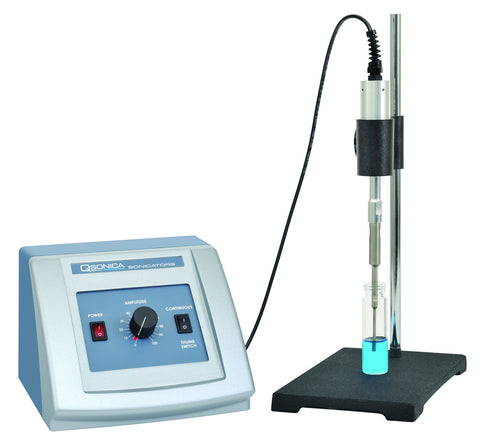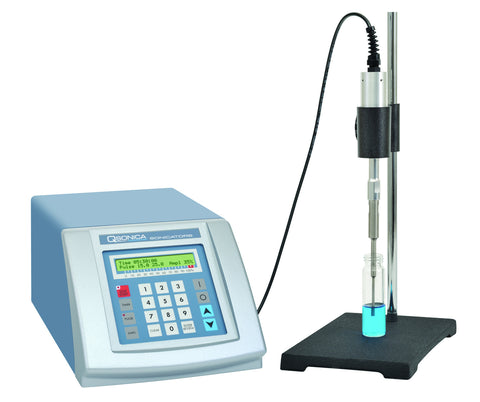Ultrasonic Homogenizers (Sonicators)
Ultrasonic homogenizers, commonly referred to as "sonicators," disrupt tissues and cells through cavitation and ultrasonic waves. Basically, an ultrasonic homogenizer has a tip which very rapidly vibrates, causing bubbles in the surrounding solution to rapidly form and collapse. This creates shear and shock waves which tear apart cells and particles.
Ultrasonics / sonicators are great for breaking apart cells and subcellular structures in suspension. They are not good for homogenizing intact tissue. Ultrasonic homogenizers can also shear DNA, which could be a good thing or a bad thing depending on your application. Other applications include creating emulsions, dispersing nanoparticles, and reducing the size of particles in suspension. Sonicators generate a significant amount of heat so they may not work well with temperature-sensitive samples. Acoustic enclosures are highly recommended; after all, you're homogenizing using high-powered sound waves. You can learn more about ultrasonic homogenization in the application center.
Uncertain if an ultrasonic is the right homogenizer for your application? We can help! Ask us anything.
-
On saleA compact and low-cost ultrasonic homogenizer for low-volume applications.
$2,200 USDfrom $1,980 USD -
On saleA digital, programmable ultrasonic homogenizer suitable for small volumes.
$3,260 USDfrom $2,935 USD


